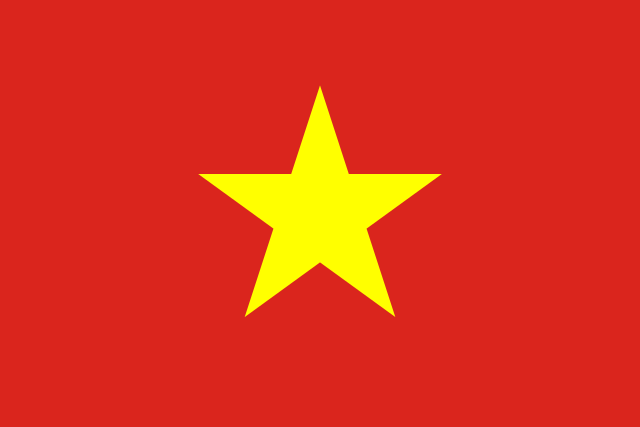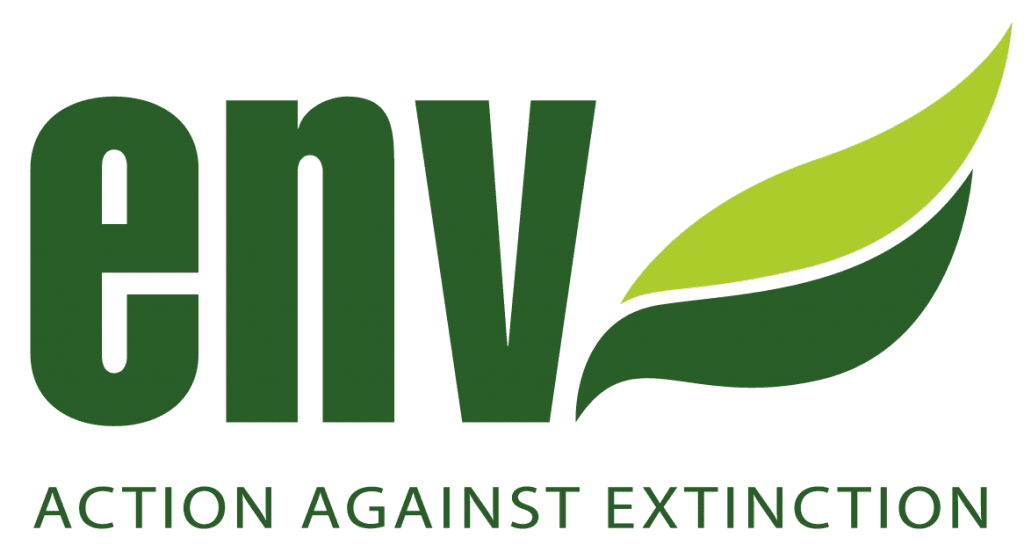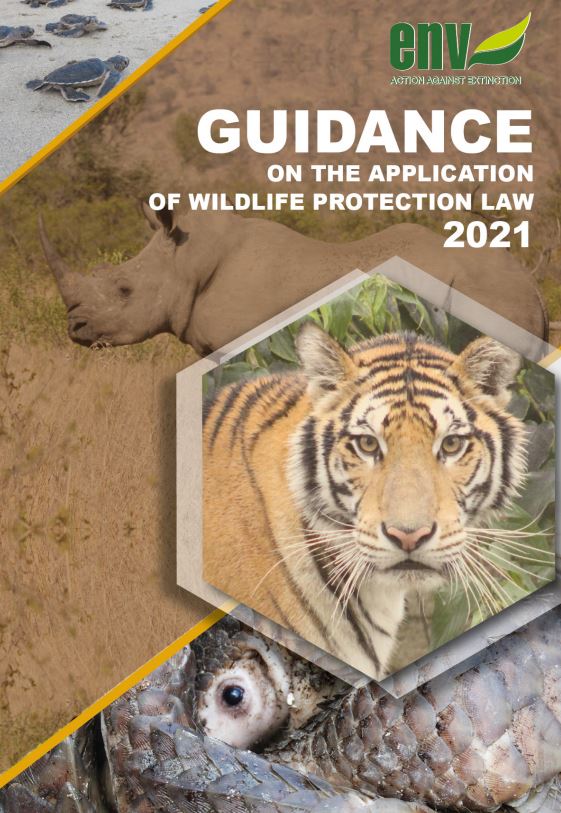Wildlife Law Library
The ENV Wildlife Law Guidance was first created and distributed in Vietnamese in early 2018, and has been updated annually since then. Presently, the Wildlife Law Guidance is widely used throughout Vietnam as a valuable tool for law enforcement officials, judges, and prosecutors who deal with wildlife crimes on local and national levels.
INTERNATIONAL LAW
| CITES (Convention on International Trade in Endangered Species of Wild Fauna and Flora) |
CITES was developed to ensure that the international trade of wild fauna and flora does not threaten the survival of the listed species in nature.
Note: The latest list of CITES species was translated into Vietnamese and announced by the CITES Management Authority of Vietnam in Notice No. 296/TB-CTVN-HTQT dated November 27, 2019, which can be found at this link: https://bit.ly/39MUA6K |
| Convention on Biological Diversity (CBD) |
|
NATIONAL LAW
Regulations on management
| Law on Fisheries 2017 | Issued on November 21, 2017 – Effective January 1, 2019 This Law deals with fishery activities; rights and responsibilities of organizations and individuals involved in fisheries and state administration of fishery. |
| Law on Forestry 2017 | Issued on November 15, 2017, took effect on January 1, 2019, replacing the 2004 Forest Protection and Development Law. The law also prohibits all hunting, catching, raising, capturing, killing, storing, transporting and trading forest animals, collecting specimens of forest plants and animals illegally. |
| Law on Veterinary Medicine 2015 | Issued on June 19, 2016 – Effective on the date of replacement of the Ordinance of the Standing Committee of the National Assembly Providing for the Disease treatment issues for animals including wildlife |
| Law on Investment 2020 | Issued on June 17, 2020– Effective on January 1, 2021, replacing the 2014 Investment Law Providing a list of endangered, precious and rare wild animals of Group I, including endangered, precious and rare wild species are strictly prohibited to be exploited and used for business investment purposes. |
| Advertising Law 2012 | The Advertising Law provides for administrative sanctions for advertising prohibited goods (as wildlife) |
| Law on Biodiversity (2008) | The consolidated document 32/VBHN-VPQH in 2018 consolidates the Biodiversity Law |
| Decree No. 26/2019/ND-CP | Dated March 8, 2019 – Effective from April 25, 2019 Detailing a number of articles and measures to enforce fishery law, specifying the provisions of the Fisheries Law. Among them, the most prominent is the regulation of 186 aquatic species on the list of endangered precious and rare species, including 126 species of Group I and 60 species of Group II. Group I is the species to be exploited for one of the purposes such as conservation, scientific research, original seeding research, international cooperation when meeting the order and procedures prescribed Article 26, Decree 26. Therefore, it is understandable that the exploitation and use of Group I species, Decree 26 for commercial purposes is strictly prohibited. Group II are species exploited for one of the following purposes: conservation, scientific research, initial seed breeding, international cooperation or meeting the minimum size and time requirements allowable exploitation as provided for in Decree 26. This regulation is construed as commercial exploitation and uses for Group II species, Decree 26 is allowed. |
| Decree 160/2013/ND-CP & Decree 64/2019/ND-CP | The Decree provides a system of criteria for evaluating and identifying wildlife species listed in the list of endangered precious and rare species prioritized for protection. Accordingly, the species is included in the list of endangered precious and rare species prioritized for protection if (i) The number of individuals is small or is in danger of extinction and (ii) Is an endemic species having one of the special values of science, health, and economics; ecology, landscape, environment, and culture – history. The Decree also stipulates the principle of conservation of endangered precious and rare wildlife species prioritized for protection and strict mechanisms to manage exploitation; exchanging, trading, gifting, renting, storing and transporting specimens; rearing and rescuing species on the list of species prioritized protection. Decree 64/2019/ND-CP has updated and amended the List of endangered precious and rare species prioritized for protection, effective from September 5, 2019. |
| Decree 06/2019/NĐ-CP | This Decree replaces and consolidates Decree 32/2006 / ND-CP on the management of endangered, precious and rare forest plants and animals of the Government, and Decree 82/2006/ND-CP dated 10 / 08/2006 of the Government on the management of export, import, re-export, and import activities from the sea, transit, breeding, rearing and artificial propagation of wild animals and plants Endangered, precious and rare. Similar to Decree 32/2006 / ND-CP, Decree 06/2019/ND-CP also divides endangered, precious and rare forest animals into 2 groups based on the degree of danger and the need for protection of the law. Laws for these species, including: (1) Group IB: It is strictly prohibited to exploit and use for commercial purposes; and (2) Group IIB: Restricting exploitation and use for commercial purposes; The Decree also stipulates conditions for raising ordinary forest animals; order and procedures for carrying out exploitation activities; raise; processing, trading, advertising and display; transport, storage; export, import, re-export and import from the sea and transit of endangered precious and rare wildlife species under the Appendix to the Convention on International Trade in Wild Fauna and Flora Endangered (CITES) and on the list of endangered precious and rare species promulgated together with Decree 06/2019/ND-CP. |
| Decree 30/2018/ND-CP | Dated 7 March 2018 of the Government – Effective from May 1, 2018 Detailing the establishment and operation of Asset valuation council; Procedures for valuation of assets in criminal proceedings The decree regulates the establishment and operation of the Asset Valuation Council, which deals with the valuation of prohibited goods including wildlife and products. |
| Decree No. 29/2018/ND-CP | Dated March 5, 2018 – Effective from August 20, 2018 Stimulating the order and procedures for the establishment of the entire people’s ownership of properties and handling of assets with ownership rights established The entire population This Decree prescribes the order and procedures for the establishment of the entire people’s ownership of property and handling of endangered, precious and rare wildlife products and articles. |
| Circular 57/2018/TT-BTC | Dated July 5, 2018 – Effective from August 20, 2018 Guiding the implementation of a number of articles procedures for determining Establishment of the entire ownership of the property and handling of properties established the ownership of the entire people |
| Decree No. 65/2010/ND-CP | Effective from July 30, 2010. Detailing and guiding the implementation of a number of articles of the Law on Biodiversity This Decree details and guides the implementation of a number of articles of the 2008 Biodiversity Law regarding biodiversity conservation plannings, conservation areas, conservation and sustainable development of species and conservation and sustainable development of genetic resources. |
| Circular 29/2019/ND-CP | Effective on Feb 2, 2020 Handling of forest animals being exhibits; and forest animals voluntarily submitted to the state by organizations and individuals Forest animal handling methods include: 1) Release of the forest animal into the wild; 2) Rescue of the forest animal; 3) Transfer of the forest animal to a zoo, a scientific research facility, an institution for environmental education or a specialized museum; 4) Sale of the forest animal; 5) Disposal of the forest animal. A handling method shall only be adopted if the one immediately preceding it is inapplicable. These methods are listed in order of priority from 1 to 5. |
| Circular 19/2018/TT-BNN | Date November 15, 2018 – Effective on January 1, 2019. Including guidelines for protection and development of aquatic resources. This Circular deals with procedures and guidelines for an investigation into and assessment of aquatic resources and living environment of aquatic species; procedures for setting up and appraising projects on establishment of marine protected areas (MPAs) and contents of decisions on establishment of MPAs of provinces; guidelines for the management of protected areas of aquatic resources; criteria and promulgation of the list of fishing occupations and gears banned from use in commercial fishing and the list of areas banned from commercial fishing for a fixed term; marking of fishing gears used at fisheries. |
| Circulars 04/2017/TT-BNN | Replacing Circular 40/2013/TT-BNNPTNT dated September 5, 2013, of the Minister of Agriculture and Rural Development and updating the List of wild plants and animals specified in the Appendix of the Convention on International Trade in Endangered Species of Wild Fauna and Flora. Promulgating the list of wild animals and plant various provisions in annexes of the convention on the international sale of species of wild animals and plants. |
| Circular 25/2016/TT-BTNMT | Dated September 22, 2016 Guiding the form of application for registration and certificate of biodiversity conservation facilities and form of a report on status conservation status under the list of precious, precious and rare species prioritized protection. This Circular provides guidance on the procedures and papers necessary for the registration of the establishment and operation of biodiversity conservation facilities. |
| Decision No. 11/2013/QD-TTg | Dated 24/1/2013 – Effective on March 15, 2013 Banning from export, import, purchase, and sale of the specimens of some of the wild fauna species in appendices to the convention on international trade in endangered species of wild fauna and flora. Decisions to prohibit the export, import and sale of wildlife specimens included in the Appendix of the Convention on International Trade in Endangered Species of Wild Fauna and Flora (CITES) and their products, including: (1) White rhinoceros (Ceratotherium simum); (2) Black rhinoceros (Diceros bicornis); and (3) African Elephants (Loxodonta africana). |
| Directive 28/CT-TTg | Dated September 17, 2016, of the Prime Minister on urgent. Measures to prevent and fight illegal acts of wildlife species. The Directive calls on stakeholders to prevent and fight violations of endangered, precious and rare wildlife products, especially those where trade is complicated ivory and rhino horn. Thereby, the Prime Minister requested ministries, branches, and provincial-level People’s Committees to continue seriously implementing Directive 03/TT-TTg in the management and protection of endangered wildlife. |
| Directive 03/CT-TTg | Dated February 20, 2014 Strengthening the direction and implementation of measures to control and conserve a hazardous, precious and rare animals. Through this directive, the Prime Minister requested ministries, branches and localities, including the Ministry of Public Security, the Ministry of Industry and Trade, the Ministry of Finance, the Ministry of Defense, the Ministry of Agriculture and Rural Development, and the Ministry of Justice, Ministry of Foreign Affairs, Ministry of Information and Communications, Supreme People’s Procuracy, Supreme People’s Court, People’s Committees of provinces and centrally-run cities, Mass media agencies propagandizing and disseminating knowledge and laws to combat violations of wildlife. |
Regulations on handling violations
| Penal Code 2015 (amended and supplemented 2017) | Effective from January 1, 2018 According to the 2017 Penal Code, violations related to wildlife can be imprisoned up to 15 years or 5 billion VND for individuals and fined up to 15 billion VND, suspended from 6 months to 3 years or suspended works only permanently for legal entities. |
| Decree No. 42/2019/ND-CP | Dated May 16, 2019 penalties for administrative violations against regulations on fisheries – Effective on July 5, 2019 This Decree replaces Decree No. 103/2013/ND-CP dated September 12, 2013, on penalties for administrative violations in fisheries activities. Decree 42 clearly defines fishery violations that are sanctioned administratively and criminally. Decree 42 also provides for penalties for violations against regulations on fisheries protection; Exploiting, collecting, trading, storing, preliminary processing, processing, preserving, transporting, transporting, exporting and importing aquatic products. The maximum fine for acts of administrative violation related to aquatic species is VND 1 billion, which is applied to a number of violations in activities of exploiting, exporting and importing aquatic products. In addition, the fine for violations related to endangered precious and rare aquatic species (not subject to criminal prosecution) will be based mainly on the volume of confiscated aquatic products. |
| Decree No. 35/2019/ND-CP | Dated April 25, 2019 penalties for administrative violations against regulations on foresty – Effective Jun 10, 2019 This Decree replaces the Government’s Decree No. 157/2013/ND-CP of November 11, 2013, prescribing the sanctioning of administrative violations regarding forest management, forest development, forest protection, and forest product management. This Decree prescribes the handling of administrative violations for species on the list of endangered precious and rare species of groups I and II of Decree No. 06 and Appendix Cites. As well as regulations on handling violations of common forest animals. As a result, violations against any ordinary forest animals worth less than VND 300 million and illegally gaining profits of less than VND 50 million in the case of the first violation will be subject to administrative sanctions according to the provisions of Decree 35. |
| Decree No. 185/2013/ND-CP | Dated November 15, 2013 – Effective January 5, 2016 Providing the penalties on administrative violations in commercial activities, production of, trading in counterfeit or banned goods and protection of consumer rights The Decree prescribes the sanctioning acts of administrative violations for acts of trading banned goods as wildlife or their products. |
| Decree No. 158/2013/ND-CP | Dated on November 12, 2013, on penalties for administrative violations pertaining to culture, sports, tourism, and advertising – Effective on May 5, 2017 This Decree prescribes the administrative sanctioning level for acts of advertising banned goods as wildlife. |
| Decree No. 155/2016/ND-CP | Dated November 18, 2016, penalties for administrative violations against regulations on environmental protection – Effective February 1, 2017 Decree 155 replaces Decree 179/2013/ND-CP as of February 1, 2017, prescribing sanctions for administrative violations for illegal exploitation of wildlife in restricted areas and violations of regulations on facility management of biodiversity conservation. Decree 155/2016/ND-CP does not prescribe sanctions against endangered, precious and rare species prioritized protection because all violations related to this species are currently regulated governed by the 2015 Penal Code, amended and supplemented 2017. |
| Resolution No. 05/2018/NQ-HDTP | Guiding the application of article 234 on violations against the regulations on wild animal welfare and article 244 on violations against the regulations on endangered or rare animals of the criminal code The Resolution guiding the application of a number of criminal facts to violators of regulations on protection of wildlife in Article 234 and violations of the regulations on protection of endangered, precious and rare animals in Article 244 also such as guidelines for handling a number of actual arising situations during the application process specified in Article 234 and Article 244 of the 2015 Penal Code (amended and supplemented 2017). In addition, the Resolution also provides for the handling of exhibits that are wild animals, endangered, precious and rare animals or their products. |
| Joint Circular No. 19/2007/TTLT/BNN& PTNT-BTP-BCA-VKSNDTC-TANDTC | Dated March 8, 2007, on guiding the application of a number of articles of the Penal code on crimes in the field of forest management, forest protection, and forest management. This joint circular guides the implementation of Article 190 of the 1999 Penal Code on Crime of breaching the regulations on the protection of valuable and rare wildlife. Accordingly, rare and precious animals are those belonging to group IB of Decree 32/2006/ ND-CP. At the same time, the Circular also provides specific guidance on the basis for assessing violations as causing serious, very serious or particularly serious consequences to apply aggravating circumstances. Specifically, the Circular issued the Appendix on determining the number of endangered, precious and rare wild animals of group IB as a basis for identification. For example, violations involving bears, 1 individual is causing serious consequences, 2 to 3 individuals are very serious consequences, 4 or more individuals are particularly serious; while just a violation against an individual tiger is particularly serious. |
| Official Dispatch 2140/VKSTC-V3 | Dated June 8, 2016, on the restoration and handling of cases, illegal storage, and transportation of ivory and rhino horn. Official dispatch of the Supreme People’s Procuracy, the Supreme People’s Court and the Ministry of Public Security guiding the procuracies at all levels to apply Clause 1, Article 155 of the 2009 Penal Code to resolve outstanding backlogs relating to ivory and rhino horn material evidences occurring before the Penal Code 2015 (amended 2017) takes effect. |
REFERENCE DOCUMENTS
| IUCN (the International Union for Conservation of Nature) | Guidelines for the placement of confiscated animals These are the guidelines of the International Union for Conservation of Nature (IUCN) on the handling of live wild animals after confiscation, for the purposes of conservation. Accordingly, there are several solutions: 1) To maintain the animals in captivity for the remainder of their natural lives 2) To return the animals to the wild; 3) To euthanize the animals, i.e. humanely destroy them The guidelines also describe the processing and handling rules, decision-tree analysis to evaluate the application of a solution to the current regulations, customs and economic conditions while ensuring the conservation of the species. |


